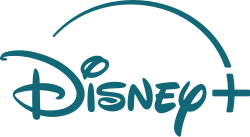Streaming platforms
Amazon Prime Video

Amazon Prime Video was originally launched in the year 2006. Upon its initial release, the popular streaming service was referred to as Amazon Unbox. Amazon Prime Video was created due to the development of Amazon Prime, which is a paid service that includes free shipping of different types of goods. Amazon Prime Video is available in approximately 200 countries around the world. Each year, Amazon invests in the production of films and TV series that are streamed as Amazon originals. [74]
Apple TV+

Apple TV+ is a streaming service owned by Apple Inc. Apple TV+ [75] is a streaming subscription platform that launched November 1, 2019. The service offers original content exclusively made by Apple, being seen as Apple Originals. This streaming platform solely releases content that can only be found on Apple TV+, there is no third-party content found on the platform whereas several other streaming services have third-party content. The Apple TV+ name derives from the Apple TV media player that was released in 2007. [76]
Disney+

Disney+ is an American subscription streaming service owned and operated by the Disney Entertainment division of The Walt Disney Company. [77] Released on November 12, 2019, the service primarily distributes films and television series produced by Walt Disney Studios and Disney General Entertainment Content, with dedicated content hubs for the brands Disney, Pixar, Marvel, Star Wars , and National Geographic, as well as Star in some regions. Original films and television series are also distributed on Disney+.
Hulu

Launched in 2007, Hulu is only available to viewers in the United States because of licensing restrictions. Hulu is one of the only streaming services that provides streaming for current on-air television shows a few days after their original broadcast on cable television, but with limited availability. Hulu originally had both a free and paid plan. The free plan was accessible only via computer and there was a limited amount of content for users, whereas the paid plan could be accessed via computers, mobile devices, and connected televisions. In 2019, The Walt Disney Company became the major owner of Hulu. [78] The platform has bundle deals where customers can subscribe to both Hulu and Disney+.
HBO Max

HBO Max is a streaming service released by Warner Bros. Discovery. The platform was released on May 27, 2020 in the United States, and within the first five months of launching, had amassed 8 million subscribers across the country. It offers classic Warner Bros. films and self-produced programs, and has won the right to exclusively air Studio Ghibli films in the United States. It is not until 45 days after the theatrical release from 2022 that the release is taking place on the platform and reached 70 million subscribers in December 2021. In September 2022, 92 million households were counted as subscribers, but since this was announced, including subscribers to the HBO channel, it is expected that the actual population of Max alone will be much smaller. [79]
Netflix

Netflix, founded by Reed Hastings and Marc Randolph, is a media streaming and video rental in 1997. Two years later, Netflix was offering the audience the possibility of an online subscription service. Subscribers could select movies and TV shows on Netflix's website and receive the chosen titles via DVDs in prepaid return envelopes. In 2007, Netflix's subscribers could watch some movies and TV shows online, directly from their homes. [80] In 2010, Netflix launched an only-streaming plan with unlimited streaming services without DVDs. Starting from the United States, the only-streaming plan reached several countries; by 2016 more than 190 countries could use this service. [81] In 2011, Netflix began to negotiate the production of original programming, starting with the series House of Cards . [82]
Paramount+

Paramount+ is a streaming service that is owned by the Paramount Global. The streaming service was launched on October 28, 2014, and was known as CBS All Access originally. [83] At the time of the release, the platform focused primarily on streaming programs from local CBS stations as well as complete access to all CBS network content. In 2016 the streaming service created original content that could only be found by using the platform. As the network continued to expand with its content, the service decided to rebrand themselves and took the name Paramount+, taking its name from Paramount Pictures film studio. The network since expanded to Latin America, Europe and Australia. [84]
Peacock

Peacock is a streaming service owned and operated by Peacock TV, [85] which is a subsidiary of NBCUniversal Television and Streaming. The streaming service gets its name from the NBC logo based on its colors. The platform had launched on July 15, 2020. The streaming service primarily features content that can be found on NBC networking channels as well as other third-party sources. Additionally, Peacock now offers original content that cannot be found on any other streaming platform. In December 2022, Peacock reached 20 million paid subscribers. In March 2023, the platform had 22 million paid subscribers.
YouTube

The domain name of YouTube was bought and activated by Chad Hurley, Steve Chen, and Jawed Karim in the beginning of 2005. YouTube launched later that year as an online video sharing and social media platform. The video platform became popular among the audience thanks to a short video, called Lazy Sunday, uploaded by Saturday Night Live in December 2005. The SNL's video was not broadcast on TV, therefore people looked for it on Google by typing "SNL rap video," "Lazy Sunday SNL," or "Chronicles of Narnia SNL." The first result of searches was a link video on YouTube, which was the beginning of sharing videos on YouTube. Because of its popularity, YouTube had some issues caused by its bandwidth expenses. In 2006, Google bought YouTube, and after some months the video platform was the second-largest engine search in the world. [86]